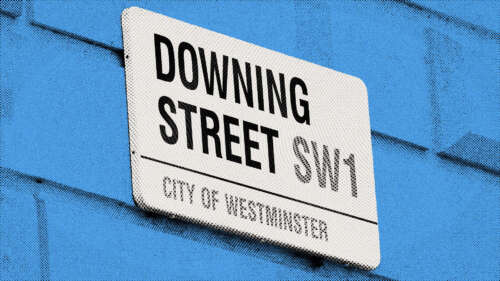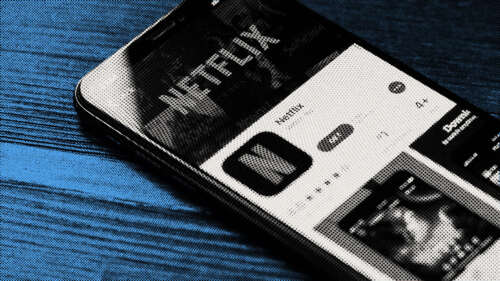With energy, food and fuel prices squeezing households and businesses across the country and a 40-year high inflation slashing the value of workers’ pay, the UK government is under increasing pressure to step in and soften the impact of the cost of living crisis.
Two of the leading campaigns driving this pressure are Enough Is Enough, an initiative aimed at fighting cost of living problems and Don’t Pay UK, a non-payment pledge urging Brits to cancel their direct debit to energy suppliers from the 1st of October.
Each of these movements has gathered significant traction in recent weeks. As more public figures like Mick Lynch, RMT leader turned social media sensation, show their support, we are seeing an increasing urge to strike, fight back and take action. This momentum now extends beyond traditional groups like those in the public sector or in lower-income jobs. Enough is Enough has already garnered 300,000 sign-ups and 1.7 million UK households are planning to stop paying their energy bills, accounting for roughly 6% of the British population.
Given the growing momentum behind these campaigns, we wanted to find out more about the audiences fighting back against rising costs. Our Insights Team analysed the audiences of each of these movements to understand who is supporting them and why. Here’s what we found.
Key Takeaways:
There’s a strong support for socialism
Recent graduates are struggling
It’s crunch time for creatives
The mainstream is fighting against the current
The Audiences
There’s a strong support for socialism
We can see a clear socialist undercurrent within both of these movements, particularly within Enough Is Enough, who fervently support left-wing movements and are especially vocal. This audience discusses a range of topics from domestic issues like education and mental health, through to global issues such as human rights and sustainability.
Recent graduates are struggling
Young people are more likely to be in precarious work and be in debt, making them one of the groups being hit hardest by the cost of living crisis. It’s no surprise then that the third largest tribe in our analysis was ‘Gen Z: Recent Graduates’, who are likely to be either unemployed or on a lower salary. Beyond this, we also saw tribes of Gamers and Party People, suggesting that the cost of living crisis is becoming a top concern for Gen Z and Millennials who would otherwise have other interests completely unrelated to finance or social activism.
It’s crunch time for creatives
Known for its high reliance on freelancers, the creative sector is especially vulnerable to economic instability. Naturally, audiences in the creative industries indexed very highly in our study, with Artistic Creatives and Performing Arts Professionals both playing prominent roles. As well as being politically left leaning and more likely to be self-employed, these tribes are also based in London, one of the most expensive cities in the world, which would explain why they are so active in their support for campaigns against rising costs.
The mainstream is fighting against the current
Above all, these campaigns have garnered the most attention amongst mainstream audiences, with a huge tribe of Mainstream Working Class emerging as the largest of the study. The prominence of this broad tribe illustrates how the cost of living crisis is dominating mainstream conversation and tapping into this topic will be essential to the success of British brands hoping to weather the recession.
The Most Vocal Tribes
We wanted to find out which of these tribes were the most vocal in their support for Don’t Pay UK and Enough Is Enough, so we drilled down into the audience to identify those actively sharing campaign content online. For each tribe, our Insights Team compared their percentage share of the total audience with their share of the conversation around the cost of living crisis. Here are our key findings:
The Mainstream: At 23%, The Mainstream had the largest share of audience and dominated 18.5% of the conversation, showing how money worries are becoming a talked-about subject well beyond activist and finance-oriented groups.
Young people: Not far behind was Young People with 19.9% of the audience share. Being the generation set to inherit this economic crisis, young people are doing the only thing they know how to do - turning to social media to rally for change.
Socialists: Although they made up just 15% of the total audience, Socialists accounted for 23% of the total conversation, indicating how loud their support is.
Creatives: Next up were Creatives with almost 14% of the total audience and conversation. Given how heavily freelancers depend on their online communities for networking and promoting their services, it’s no surprise that Creatives are so active on social media.
Conclusion
The widespread yearning for change that we’re seeing on social media suggests that the cost of living is now a dominant concern for multiple UK audiences. The cost of living crisis is an undeniably systemic issue, with millions feeling the effects. And with inflation set to reach 18% in 2023, we predict that campaigns like Don’t Pay UK and Enough Is Enough will only increase in popularity as audiences take collective action in an attempt to keep costs down.
So how should brands be responding to this clamour for change?
With consumer confidence hitting a record low, brands need to tread carefully if they want to continue engaging new and existing audiences. This means it’s even more important for brands to start listening to their customers and delivering messaging that meets them where they’re at.
Several brands are already adapting their brand messaging to reflect and address these feelings of uncertainty. From John Lewis axing its financially problematic slogan, Tesco Mobile launching its new ‘Spend Less With Us’ campaign and Natwest launching its ‘Tomorrow Begins Today’ campaign aimed at boosting customers’ financial confidence, these are all key examples of how brands can align themselves more closely with their customers during this difficult time.
What these campaigns have in common is a clear understanding of their customer’s concerns and a value proposition that directly addresses these concerns, and Fifty’s insight and activation technology provides a seamless way to do just that. Our technology transforms audience understanding directly into activation, ensuring your campaigns are saying the right thing, to the right people, at the right time and on the right platform.
To find out how Fifty can help you reach any audience, anywhere - even during a recession - get in touch with our team at [email protected]





































